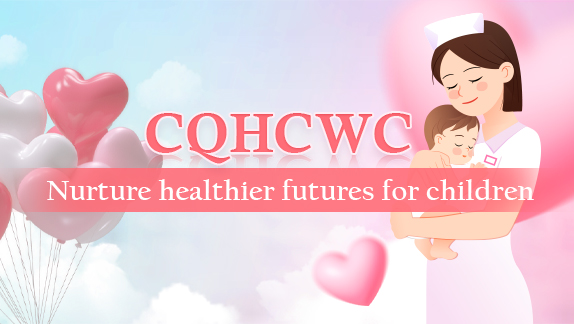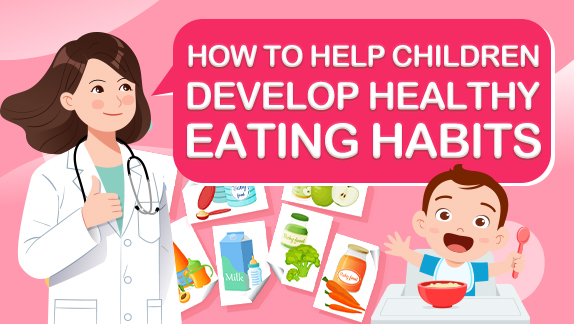Protecting newborn babies in the face of COVID-19 outbreak
The Corona Virus Disease 2019, or COVID-19, is caused by a kind of RNA virus — the novel coronavirus or called SARS-CoV-2. It is with strong infectivity. Its infection has spread to nearly 200 countries and regions worldwide and has become a global pandemic. At present, it is considered that all populations are susceptible.
Because of the immature immune system development and the possibility of vertical mother-to-child transmission, neonates are also at high risk for COVID-19 infection. There have been cases of COVID-19 infection in newborns. Therefore, more care needs to be taken to protect newborns.
1. Transmission of SARS-CoV-2 infection in newborns.
(1). Mainly transferred through droplets.
Newborns are susceptible to infection by inhaling virus-carrying droplets formed during coughing, sneezing and talking between infected persons and there is a possibility of aerosol transmission when exposed to virus-carrying aerosol particles in a relatively closed environment.
(2). Close contact is another important route of transmission.
When viral droplets are deposited on the surface of an object and when an infant touches it by hand, it is easy to cause infection when contacting the mucosa of the mouth, nose and eyes.
(3). At present, whether SARS-CoV-2 can be transmitted vertically through the placenta or during breast-feeding after the birth of an infant remains inconclusive.
2. Which newborns need to be screened for SARS-CoV-2?
Newborns need to be screened if they meet any of the following:
(1). Confirmed or highly suspected SARS-CoV-2 infection in pregnant or lying-in women.
(2). Confirmed or highly suspected SARS-CoV-2 infection in close contacts with a pregnant woman or maternal family.
(3). Postnatal caregivers with confirmed and highly suspected SARS-CoV-2 infection.
Breastfeeding is not recommended for mothers with suspected SARS-CoV-2 infection and for those with confirmed infection who are not cured.
For mothers with confirmed COVID-19 infection, newborns will be observed for two weeks immediately after birth and breastfeeding is suspended.
3. How to care for newborn babies and identify abnormal manifestations?
If the newborn has no history of COVID-19-related contact and no special discomfort, it is not necessary to test whether the newborn is infected with SARS-CoV-2 and care can be conducted according to nursing methods for normal newborns.
Key points of care are as follows:
(1). Measure and record the baby's temperature in the morning, at midday and in the evening daily. If there is fever (body temperature of more than 37.3 degrees), you should take baby to the hospital promptly.
(2). If the baby is found to be poor in feeding, accompanied by vomiting, diarrhea and other symptoms, it is also necessary to take the baby to the hospital promptly.
(3). If the baby is found to have shortness of breath, cyanosis, dyspnea, or is moaning, wheezing and has a poor mental response and other symptoms, parents should take the baby to the hospital immediately.
4. How to provide home care for newborn babies during the epidemic?
(1). Daily household protection.
Because the newborn cannot adapt to wearing masks, parents should pay special attention to protecting their children. Parents should first take personal protection to avoid self-infection, wear masks on their own initiative, do not kiss their children and do not breathe onto their children.
When parents cough or sneeze, they must cover their mouth and nose completely with paper towels, throw the used paper towels into a closed garbage bin immediately and thoroughly clean their hands.
Parents should always keep their hands clean and hygienic. Before and after changing diapers, feeding, preparing milk powder or breastfeeding, they should clean their hands. Soap or hand sanitizers should be used for each hand wash for at least 20 seconds. It is recommended to wipe your hands with paper towels after washing.
Parents should try their best to avoid going to crowded public places and wear masks regularly when going out. Change clothes immediately after going home, properly handle used masks and clean hands and face in time before touching the baby.
(2). Home environment should be ventilated.
Ventilate the rooms two or three times a day, with windows open for about 30 minutes each time. When the room is ventilated, the baby can be transferred to other rooms and take measures to avoid the baby getting cold when rooms are ventilated. Home fresh air systems or air purifiers can be activated regularly for families with such facilities.
(3). Home cleaning and disinfection.
Keep your home environment hygienic, clean and tidy. Tables, cribs and other items that babies may touch should be wiped with chlorine-containing disinfectants containing 250-500 mg of available chlorine per liter and then washed with water, at least once a day.
Keep floors clean and clean the floor with chlorine disinfectant containing 250-500mg/L of effective chlorine every day.
When disinfecting daily fabrics (towels, clothes, quilt covers, etc.), soak them in chlorine disinfectant for one hour, or boil them with water for 15 minutes to disinfect them.
Heat-resistant articles such as baby bottles, pacifiers, should be sterilized by boiling in water for 15 minutes.

 CQHCWC: Nurture healthier futures for children
CQHCWC: Nurture healthier futures for children How to help children develop healthy eating habits
How to help children develop healthy eating habits Wechat
Wechat Weibo
Weibo